|
Government Spending Is The Problem The late, great economist Milton Friedman said, "The real problem is government spending." This is true as spending comes before taxes or regulations. In fact, if people didn't form a government or politicians didn’t create new programs, then there would be no need for government spending and no need for taxes. And if there was no government spending nor taxes to fund spending then there would be no one to create or enforce regulations. While this might sound like a utopian paradise, which I agree, there are essential limited roles for governments outlined in constitutions and laws. Of course, most governments are doing much more than providing limited roles that preserve life, liberty, and property. This is why I have long been working diligently for more than a decade to get a strong fiscal rule of a spending limit enacted by federal, state, and local governments promptly under my calling to "let people prosper," as effectively limiting government supports more liberty and therefore more opportunities to flourish. Fortunately, there have been multiple state think tanks that have championed this sound budgeting approach through what they've called either the Responsible, Conservative, or Sustainable State Budget. I recently worked with Americans for Tax Reform to publish the Sustainable Budget Project, which provides spending comparisons and other valuable information for every state. This groundbreaking approach was outlined recently in my co-authored op-ed with Grover Norquest of ATR in the Wall Street Journal. When Did This Budget Approach Begin? I started this approach in 2013 with my former colleagues at the Texas Public Policy Foundation with work on the Conservative Texas Budget. The approach is a fiscal rule based on an appropriations limit that covers as much of the budget as possible, ideally the entire budget, with a maximum amount based on the rate of population growth plus inflation and a supermajority (two-thirds) vote to exceed it. A version of this approach was started in Colorado in 1992 with their taxpayer's bill of rights (TABOR), which was championed by key folks like Dr. Barry Poulson and others. (picture below is from a road sign in Texas) Why Population Growth Plus Inflation? While there are many measures to use for a spending growth limit, the rate of population growth plus inflation provides the best reasonable measure of the average taxpayer's ability to pay for government spending without excessively crowding out their productive activities. It is important to look at this from the taxpayer’s perspective rather than the appropriator’s view given taxpayers fund every dollar that appropriators redistribute from the private sector. Population growth plus inflation is also a stable metric reducing uncertainty for taxpayers (and appropriators) and essentially freezes inflation-adjusted per capita government spending over time. The research in this space is clear that the best fiscal rule is a spending limit using the rate of population growth plus inflation, not gross state product, personal income, or other growth rates. In fact, population growth plus inflation typically grows slower than these other rates so that more money stays in the productive private sector where it belongs. To get technical for a moment, personal income growth and gross state product growth are essentially population growth plus inflation plus productivity growth. There's no reasonable consideration that government is more productive over time, so that term would be zero leaving population growth plus inflation. And if you consider the productivity growth in the private sector, then more money should be in that sector at the margin for the greatest rate of return, leaving just population growth plus inflation. Population growth plus inflation becomes the best measure to use no matter how you look at it. Given the high inflation rate more recently, it is wise to use the average growth rate of population growth plus inflation over a number of years to smooth out the increased volatility (ATR's Sustainable Budget Project uses the average rate over the three years prior to a session year). And this rate of population growth plus inflation should be a ceiling and not a target as governments should be appropriating less than this limit. Ideally, governments should freeze or cut government spending at all levels of government to provide more room for tax relief, less regulation, and more money in taxpayers' pockets. Overview of Conservative Texas Budget Approach Figure 1 shows how the growth in Texas’ biennial budget was cut by one-fourth after the creation of the Conservative Texas Budget in 2014 that first influenced the 2015 Legislature when crafting the 2016-17 budget along with changes in the state’s governor (Gov. Greg Abbott), lieutenant governor (Lt. Gov. Dan Patrick), and some legislators. The 8.9% average growth rate of appropriations since then was below the 9.5% biennial average rate of population growth plus inflation since then, which this was drive substantially higher after the latest 2024-25 budget that is well above this key metric (before this biennial budget the growth rate was 5.2% compared with 9.4% in the rate of population growth plus inflation). This approach was mostly put into state law in Texas in 2021 with Senate Bill 1336, as the state already has a spending limit in the constitution. The bill improved the limit to cover all general revenue ("consolidated general revenue") or 55% of the total budget rather than just 45% previously, base the growth limit on the rate of population growth times inflation instead of personal income growth, and raise the vote from a simple majority to three-fifths of both chambers to exceed it instead of a simple majority. There are improvements that should be made to this recent statutory spending limit change in Texas, such as adding it to the constitution and improving the growth rate to population growth plus inflation instead of population growth times inflation calculated by (1+pop)*(1+inf). But this limit is now one of the strongest in the nation as historically the gold standard for a spending limit of the Colorado's Taxpayer Bill of Rights (TABOR) has been watered down over the years by their courts and legislators, as it currently covers just 43% of the budget instead of the original 67%. My Work On The Federal Budget In The White House From June 2019 to May 2020, I took a hiatus from state policy work to serve Americans as the associate director for economic policy ("chief economist") at the White House's Office of Management and Budget. There I learned much about the federal budget, the appropriations process, and the economic assumptions which are used to provide the upcoming 10-year budget projections. In the President's FY 2021 budget, we found $4.6 trillion in fiscal savings and I was able to include the need for a fiscal rule which rarely happens (pic of President Trump's last budget). Sustainable Budget Work With Other States and ATR When I returned to the Texas Public Policy Foundation in May 2020, as I wanted to get back to a place with some sense of freedom during the COVID-19 pandemic and to be closer to family, I started an effort to work on this sound budgeting approach with other state think tanks. This contributed to me working with many fantastic people who are trying to restrain government spending in their states and the federal levels. Here are the latest data on the federal and state budgets as part of ATR's Sustainable Budget Project. From 2014 to 2023, the following happened: Federal spending increased by 81.7%, nearly four times faster than the 23.1% increase in the rate of population growth plus inflation.
Result: American taxpayers could have been spared more than $2.5 trillion in taxes and debt just in 2023 if federal and state governments had grown no faster than the rate of population growth plus inflation during the previous decade. And this would be even more if we considered the cumulative savings over the period. My hope is that if we can get enough state think tanks to promote this budgeting approach, get this approach put into constitutions and statutes, and use it to limit local government spending as well, there will be plenty of momentum to provide sustainable, substantial tax relief and eventually impose a fiscal rule of a spending limit on the federal budget. This is an uphill battle but I believe it is necessary to preserve liberty and provide more opportunities to let people prosper. Sustainable State Budget Revolution Across The Country Below are the states and think tanks which I'm working with and this revolution is going, which you can find an overview of this budgeting approach in Louisiana and should be applied elsewhere. I update these periodically, successful versus not successful budgeting attempts being 20-7 so far.
If you're interested in doing this in your state, please reach out to me. For more details, check out these write-ups on this issue by Grover Norquist and I at WSJ, Dan Mitchell at International Liberty, and The Economist.
0 Comments
Federal and state layouts are vastly outpacing the combined rate of inflation and population growth. The U.S. national debt recently passed $33 trillion, more than 120% of gross domestic product. Left-wing politicians assert that Americans are undertaxed, but the data show that the government spends too much.
Americans for Tax Reform launched the Sustainable Budget Project in September to document the rise in government spending over the past decade. The results are clear: Overspending is the problem. Between 2013 and 2022, aggregate annual spending by the 50 state governments, excluding federal funds, increased 51.7%. Total annual federal spending rose 69.4% during the decade, more than three times as fast as the 21.6% increase in the rate of population growth plus inflation. If government grows faster than this rate, then it is growing faster than what the average taxpayer can afford. Had the federal government limited the growth in spending to a maximum of the population growth rate plus inflation during that decade, in 2022 the federal government would have spent $1.6 trillion less than it did, resulting in at least a $200 billion surplus. If the federal government had done this over the past two decades, the national debt would have increased by less than $500 billion instead of $19 trillion. If state governments had limited spending growth to the rate of population growth plus inflation during the last decade, they would have spent $1.39 trillion in 2022, $344 billion less than the $1.74 trillion they actually spent. Had federal and state governments simply grown no faster than the rate of population growth plus inflation, taxpayers could have been spared at least $2 trillion in taxes and debt in 2022 and trillions of dollars more over time. The U.S. hasn’t needed drastic budget cuts, just slower, more sustainable debt growth. Our project defines each state’s overspending problem by providing a dollar-figure spending ceiling and allowing anyone to see how government spending in a state has grown relative to the rate of population growth plus inflation. It will publish and promote an annual benchmark spending level for every state, which lawmakers must not exceed if they want to keep state spending in check. Limiting state spending to the Sustainable Budget Project benchmark isn’t impossible. Lawmakers in more states are beginning to implement the sorts of structural reforms necessary to slow the rate of government spending to a sustainable clip. During the past decade, Colorado and Texas have demonstrated that this can be done. Colorado spent a cumulative $12.8 billion less over the past decade than what could have been available under the benchmark. State lawmakers could have dramatically cut the state’s individual income tax. Instead, there is a push in Colorado to raise taxes and destroy the Taxpayer’s Bill of Rights, the state’s constitutional requirement that all tax increases be subject to voter approval and revenue collected in excess of the state spending cap be refunded to taxpayers. Texas spent $16.4 billion less than the benchmark over the past decade, savings that could have been used to eliminate its gross-receipts-style franchise tax and other bad taxes. Rather than continuing to keep state spending in check, Texas lawmakers instead passed the largest state budget in the state’s history this year. Excessive spending at the federal, state and local levels of government deserves more attention. Tax hikes are easy to identify, but there has been no objective, binary metric to determine whether a state government spends too much. By focusing on the rate of population growth plus inflation, the Sustainable Budget Project provides such a standard. Governors and state legislators need to implement reforms and practice restraint to slow the steep upward trajectory of government spending. That lawmakers in large, politically important states have already demonstrated this ability has shown their counterparts in other states and in Washington that sustainable budgeting is possible. With more modest growth in state government spending, lawmakers can lower taxes and Americans can keep more of what they earn. Mr. Norquist is president of Americans for Tax Reform. Mr. Ginn, a senior fellow at ATR, served as chief economist of the White House’s Office of Management and Budget, 2019-20. Originally published at Wall Street Journal. For at least a decade before the pandemic, Tennessee leaders have practiced conservative budgeting, keeping increases in state spending below population growth plus inflation. This saved Tennessee taxpayers billions of dollars, allowing for further pro-growth tax cuts. As the state is finally spending the last of its federal relief funds, it is more important than ever that Tennessee leaders practice conservative budgeting and fiscal restraint, correct for those excesses, and return to pre-pandemic spending trends. The Conservative Tennessee Budget ensures that the burden on Tennessee families to fund the state government will not increase beyond their ability to pay for it. For the upcoming FY 2025 budget, that maximum threshold would be $59.45 billion. By appropriating below that amount, Tennessee policymakers will continue to give taxpayers the best opportunity to prosper and live their version of the American dream. Finally, Tennessee should make this CTB approach the law of the land by improving the state’s current spending limit with this stronger limit to best let people prosper. Originally published at Beacon Center. Louisiana’s 2023 Regular Legislative Session ended on June 8th with a bang. Amid much arguing and a lot of untransparent, last-minute maneuvering, the Legislature passed a big-spending budget that busted through its own limits on spending extra taxpayer dollars (also known as the “spending cap” or the “expenditure limit”). When the dust settled, the legislature spent approximately $2.2 billion in extra revenue this year and nearly $1 billion more than was originally expected in fiscal year 2024 (FY 24). In doing so, they missed a critical opportunity to save for the future, pay down debt, and put Louisiana on a path toward a comeback. Louisiana’s Weak Expenditure Limit Is A Problem When the government takes in more tax dollars, politicians tend to spend it. Unfortunately, as budgets grow year after year, that spending keeps getting higher and higher. That might seem OK in good times, when more money is coming in. But when bad times come, revenue drops, and taxpayers are stuck paying for an unsustainable budget. That’s why a spending cap is important. Think of it this way. If you get a raise at work and have more money to spend, you might decide to go on a spending spree and buy a new car or a bigger house. But if you lose your job (and don’t have money saved up), you’re going to struggle to pay your bills. That’s what’s happening with Louisiana’s budget. Over the last few years, tax increases, personal income growth, and massive infusions of federal dollars led to an influx of cash. In other words, these are “good times” from a fiscal perspective, and more money has been coming into the state’s coffers. Unfortunately, Louisiana’s spending cap is weak, ineffective, arbitrary, and inconsistent—and it allows legislators to keep busting through its limits. This year, the legislature decided to irresponsibly raise the limit by $1.4 billion to $17.9 billion—12.7% higher than the original limit in FY 23—so they could go on a spending spree. Where Did the Extra Money Come From? In FY 23, there was an additional $2.2 billion more than was originally appropriated to fund the state government. This included $726 million remaining from FY 22 (called a surplus) and an additional $1.5 billion in revenue and budget savings in FY 23 (called an excess). Fiscal conservatives in the legislature presented an option to spend this money wisely, without busting the spending cap, by saving for a rainy day, triggering tax relief for all taxpayers, paying down costly debt, and improving dilapidated infrastructure. However, as the carrot was waved in front of many legislators to “bring home the bacon,” many caved to the pressure and voted to raise the spending cap and spend all the available money. The FY 24 budget as passed by the Legislature totals a record-breaking $51 billion and added roughly $800 million in new, recurring spending (spending that must continue year after year). This budget is nearly double what was spent just ten years ago. This budget growth is unsustainable and beyond the ability of the average Louisiana taxpayer to pay. *FY 23 budget as of 12/1/2022 ** FY 24 appropriations as passed by the Legislature Where was the money spent? With the influx of more than $2.2 billion in tax revenue above and beyond what was needed to run an already bloated state government budget, plus an additional $1 billion for the following year, lawmakers used a series of budget bills to appropriate these funds that exceeded the expenditure limit in both years and grew the budget irresponsibly for future years when revenues are predicted to decline.
A mere $60 million more deposited into the Rainy Day Fund–instead of some of the above favored member projects–would have triggered tax relief for millions of Louisiana taxpayers. It would have been modest, to be sure, but it was promised by the legislature in 2021 that if revenues exceeded a certain growth rate, taxes would be lowered by that amount. And revenues did exceed a very generous growth rate, but because not enough money was placed in the savings account, the trigger wasn’t met. In other words, lawmakers actively chose to spend a modest portion of the $2.2 billion total that was intended for tax relief on other favored projects. While there was much debate and discussion, very little was given to paying down debt. The $473 million to LASERS debt is just half of what was originally planned in the House passed version of the budget bills, which would have freed up over 8% of employee benefit costs for the state. In the end, only $50 million, which was the required payment, went to TRSL, the teacher’s retirement system. That’s a drop in the bucket compared to the $600 million proposed by the House for teachers and $800 million for state workers. The total owed on public employee retirement debt totals more than $19 billion and total debt owed by the state is more than $29 billion, this payment represents pocket change. The $525 million in debt payments that made it through the entire process is helpful, to be sure, but frees up very little and does not improve the outlook much in the long-run. To add insult to injury, no forethought was given to the types and locations of infrastructure projects in the state, primarily taking shape in the form of pork barrel projects to local governments for local parks, roads, water systems, and the like, rather than a comprehensive, thoughtful plan put forth that maintained current state roads and built new capacity to move Louisiana forward in the future. Better Budgeting for the Future There should be a better guardrail placed on budget growth which sets a maximum that can be appropriated each year. This will provide an easy, transparent way to see if responsible budgeting occurs throughout the session. Of course, a spending limit should ultimately be based on spending, but using appropriations gives taxpayers a better way to see how their money is being used throughout the legislative process. And there is a better metric to use that represents the average taxpayer’s ability to pay for government spending in the rate of population growth plus inflation. This is why the Pelican Institute released the proposed Responsible Louisiana Budget (RLB) earlier this year which limits state funds to less than the average rate of population growth plus inflation over the last three years. The method is being recommended in more than 10 other states to help rein in out of control spending with mixed results. For the FY 24 RLB, the growth rate was 4.1% over FY 23 appropriations for a maximum of state funds appropriations of $21.4 billion. This amount is different from the state’s current expenditure limit as there are different amounts covered and the amount should be the largest part of the budget possible, which is why we started with state funds, but more would be preferable. The following chart shows the recommended RLB and what the actual budget looks like, which is $2.4 billion higher than the RLB. Therefore, this is an irresponsible budget and is unsustainable given the ongoing expenditures throughout the budget. There was some good use of funds to pay down debt, but otherwise this growth in the budget will mean greater spending restraint or higher taxes will be necessary to keep these services, activities, and projects funded in the future. And this is not the time to do this given that more people are leaving Louisiana than moving in and there are economic headwinds on the horizon. We need a comeback story now. This budget is a tremendous, missed opportunity and actually hurts that effort. Our state’s leaders must do better going forward.
This year, lawmakers had a unique and significant opportunity to make a real difference for the future of Louisiana. But that opportunity was squandered by Louisiana politics at its finest. The state had a historic opportunity to pay down debt and save for the future, setting Louisiana on a path to fiscal responsibility and sustainability. Lawmakers also had an opportunity to provide much needed tax relief amid record-breaking inflationary times to help families across the state, and they had the opportunity to address the astronomical backlog of infrastructure needs in a responsible and organized fashion. Instead, lawmakers followed the path of least resistance, to “bring home the bacon” and continue to increase local government dependence on the state, while also continuing to grow state government in an unsustainable way. It is very likely lawmakers in the new term will be faced with similar decisions in the 2024 Legislative Session. Will Louisiana voters continue to elect leaders who will continue down the path of unsustainability, or will they elect leaders who will make the responsible decisions to put Louisiana on a path to a Comeback Story? Originally posted at Pelican Institute with co-author Jamie Tairov. The hearing is scheduled for today at 10 am ET at Longworth House Office Building: Hearing on the U.S. Tax Code Subsidizing Green Corporate Handouts and the Chinese Communist Party. Below is the video of the full hearing (my statement starts at time 27:30 with other comments throughout the 4-hour-long hearing). And below that is my written testimony based on this recent research on The Inflation Reduction Act's Costly New Tax Credits for Electric Vehicle Batteries and the policy brief. The debt ceiling standoff between President Biden and the Republican-controlled US House of Representatives indicates Republicans care about government spending and deficits again, allegedly.
But history tells a different story. Since 1980, the national debt has risen substantially each year, regardless of whether the presidency, House, or Senate was red or blue. In my recent interview with financial expert David Bahnsen, he said, “[Conservatives] are losing their moral credibility…we can’t only be fiscal conservatives when there’s a Democrat in the White House.” Proving Bahnsen’s point, two-thirds of the national debt was added just since 2009: $9.3 trillion during President Obama’s eight years, $7.8 trillion over President Trump’s four years (more than half of which was added during the COVID-19 pandemic and related shutdowns), and already $3.7 trillion in President Biden’s two years, with much more to come. During the Obama and Trump terms, both Republicans or Democrats controlled Congress. Neither put the breaks on borrowing. Spending restraint is necessary. Spending less would help avoid default on the debt, and help reduce expected massive deficits. If deficits continue to accelerate, as the Congressional Budget Office projects with a current policy baseline, the Federal Reserve will, at some point, be forced to monetize this new debt at such a scale that the post-pandemic inflation will seem mild by comparison. Moreover, higher deficits and interest rates will result in higher net interest payments, which will soon surpass $1 trillion per year, thereby crowding out Congressional budgets and likely necessitate more spending, taxes, and inflation. In early 2021, inflation escalated quickly after President Biden and Democrats passed the $2 trillion American Rescue Plan Act, handing out additional, unnecessary, blanket tax rebates and ratcheting up payouts to state and local governments and wasteful programs. And then there were the other costly legislative offerings of the “infrastructure” bill: the CHIPS Act, and the (inappropriately named) Inflation Reduction Act. Then, much of this substantial new debt generated by more than $7 trillion in excessive spending since early 2020 was purchased by the Fed, more than doubling the monetary base. Burdensome regulations imposed by the Biden administration, particularly on oil and gas production, along with tax hikes, resulted in a 40-year-high inflation rate and the slowest year of economic growth during a recovery in decades. The monetary base has finally started declining – down 6.5 percent since its peak of nearly $9 trillion in April 2022–and inflation has come down slightly but remains persistently high at 6.4 percent. Despite President Biden’s claims in his recent State of the Union address, deficits under his administration have remained near historic highs. While it’s true that the deficit has declined, it remains well above $1 trillion, and the decline was from expiring pandemic relief measures. The Congressional Budget Office finds the deficit will remain elevated well above $1 trillion and “averages $2 trillion per year from 2024 to 2033.” That’s far from balancing the budget or, better yet, achieving a surplus that could reduce the national debt, a feat achieved in only 6 years since 1940 (1947, 1948, 1951, 1956, 1957, and 1969). And it hasn’t been sustained in a century, since Presidents William Harding then Calvin Coolidge effectively restrained government spending. Cutting total spending is necessary. But trimming discretionary spending alone is not enough, as that will only temporarily address America’s fiscal crisis. To get out of this national crisis, we need perpetual spending restraint, like that championed by President Coolidge, which will require key reforms to “mandatory” programs like Social Security and Medicare. While a balanced budget amendment sounds good (and would be much better than our lack of a fiscal rule at the federal level today) it would likely result in rising taxes, which would be detrimental to growth and deficit-reduction efforts. A federal spending limit tackles the ultimate burden of government: spending. This principle works at the state level in places like Texas, where the Legislature has held the budget in check over the last decade, contributing to a $32.7 billion surplus that could provide historic tax relief. Other state think tanks are weighing this responsible-budgeting approach, limiting spending to a maximum rate of population growth plus inflation. This rate is too high now, but typically provides a stable metric that reasonably accounts for the average taxpayer’s ability to pay for government spending while growing less than the economy. Instituting a federal spending limit would encourage Congress to narrow its scope to constitutional duties. This could be done with the Responsible American Budget, which has been supported by economists, politicians, and thought leaders, by limiting federal budget growth to correspond with population growth plus inflation. This approach would help remove failed programs from our lives, while allowing for more free-market capitalism to support human flourishing. Had this limit been followed over the past 20 years, the US could have added just $500 billion to the national debt on a static basis, instead of the $19 trillion we got. The more likely result would have been paying down the debt, given the dynamic effects of such a pro-growth policy. While House Republicans are trying to restrain spending for the moment, both sides of the political aisle need to encourage a bigger shift that embraces spending limits and pro-growth policies. We must cut government spending. The negotiations around raising the debt ceiling should be that opportunity to provide fiscal sanity. If not, we will have more costly consequences that Americans can’t afford. Originally published at American Institute for Economic Research. Key Point: Americans are suffering under big-government policies as average weekly earnings adjusted for inflation are down for 21 straight months. It's time for pro-growth policies to unleash economic potential to let people prosper. Overview: The irresponsible “shutdown recession” and subsequent government failures have led to a longer, deeper recession with high inflation that are having persistent consequences for many Americans’ livelihoods. This includes excessive federal spending redistributing scarce private sector resources with deficit spending of more than $7 trillion since January 2020 to reach the new high of $31.4 trillion in national debt—about $95,000 owed per American or $250,000 owed per taxpayer. This new debt has hit its limit and needs to be addressed with spending restraint as the Federal Reserve monetized most of the new debt, leading to a 40-year-high inflation rates. The failed policies of the Biden administration, Congress, and the Fed must be replaced with a liberty-preserving, free-market, pro-growth approach by the new majority by House Republicans so there are more opportunities to let people prosper. Labor Market: The U.S. Bureau of Labor Statistics recently released the U.S. jobs report for December 2022. The BLS’s establishment report shows there were 223,000 net nonfarm jobs added last month, with 220,000 added in the private sector. Interestingly, while there have appeared to be a relatively robust number of jobs created, a recent report by the Philadelphia Fed find that if you add up the jobs added in states in Q2:2022 there were just 10,500 net new jobs rather than more than 1 million initially estimated. This further indicates that the recession started in (likely) March 2022 (more on this below). That expected revision to the establishment report supports the weak data in the BLS’s household survey, which employment increased by 717,000 jobs last month but had declined in four of the last nine months for a total increase of 916,000 jobs since March 2022. This number of net jobs added since then is much lower than the report 2.9 million payroll jobs in the establishment. The official U3 unemployment rate declined slightly to 3.5%, but challenges remain, including: 3.1% decline in average weekly earnings (inflation-adjusted) over the last year, 0.4-percentage point lower prime-age (25–54 years old) employment-population ratio than in February 2020, 0.6-percentage point below prime-age labor force participation rate, and 1.0-percentage-point lower total labor-force participation rate with millions of people out of the labor force. These data support my warnings for months of stagflation, recession, and a “zombie economy.” This includes “zombie labor” as many workers are sitting on the sidelines and others are “quiet quitting” while there’s a declining number of unfilled jobs than unemployed people to 4.5 million And that demand for labor is likely inflated from many “zombie firms,” which run on debt and could make up at least 20% of the stock market and will likely lay off workers with rising debt costs. Economic Growth: The U.S. Bureau of Economic Analysis’ released economic output data for Q4:2022. The following provides data for real total gross domestic product (GDP), measured in chained 2012 dollars, and real private GDP, which excludes government consumption expenditures and gross investment. The shutdown recession in 2020 had GDP contract at historic annualized rates because of individual responses and government-imposed shutdowns related to the COVID-19 pandemic. Economic activity has had booms and busts thereafter because of inappropriately imposed government COVID-related restrictions in response to the pandemic and poor fiscal policies that severely hurt people’s ability to exchange and work. Since 2021, the growth in nominal total GDP, measured in current dollars, was dominated by inflation, which distorts economic activity. The GDP implicit price deflator was +6.1% for Q4-over-Q4 2021, representing half of the +12.2% increase in nominal total GDP. This inflation measure was +9.1% in Q2:2022—the highest since Q1:1981—for a +8.5% increase in nominal total GDP that quarter. This made two consecutive declines in real total (and private) GDP, providing a criterion to date recessions every time since at least 1950. In Q3:2022, nominal total GDP was +7.6% and GDP inflation was +4.4% for the +3.2% increase in real total GDP. But if inflation had been as high as it was in the prior two quarters or had the contribution of net exports of goods and services (driven by natural gas exports to Europe) not been 2.9%, real total GDP would have either declined or been essentially flat for a third straight quarter. In Q4:2022, there was a similar story of weaknesses as nominal total GDP was +6.4% and GDP inflation was +3.5% for the +2.9% increase in real total GDP. But if you consider the +2.9% real total GDP growth was driven by contributions of volatile inventories (+1.5pp), government spending (+0.6pp), and next exports (+0.6pp) which total +2.7pp, the actual growth is quite tepid. For all of 2022, real total GDP growth is reported +2.1% year-over-year but measured by Q4-over-Q4 the growth rate was only +0.96%, which was the slowest Q4-over-Q4 growth for a year since 2009 (last part of Great Recession). The Atlanta Fed’s early GDPNow projection on January 27, 2023 for real total GDP growth in Q1:2023 was +0.7% based on the latest data available. The table above also shows the last expansion from June 2009 to February 2020. The earlier part of the expansion had slower real total GDP growth but had faster real private GDP growth. A reason for this difference is higher deficit-spending in the latter period, contributing to crowding-out of the productive private sector. Congress’ excessive spending thereafter led to a massive increase in the national debt that would have led to higher market interest rates. This is yet another example of how there is always an excessive government spending problem as noted in the following figure with federal spending and tax receipts as a share of GDP. But the Fed monetized much of it to keep rates artificially lower thereby creating higher inflation as there has been too much money chasing too few goods and services as production has been overregulated and overtaxed and workers have been given too many handouts. The Fed’s balance sheet exploded from about $4 trillion, when it was already bloated after the Great Recession, to nearly $9 trillion and is down only about 6% since the record high in April 2022. The Fed will need to cut its balance sheet (see first figure below with total assets over time) more aggressively if it is to stop manipulating so many markets (see second figure with types of assets on its balance sheet) and persistently tame inflation. The resulting inflation measured by the consumer price index (CPI) has cooled some from the peak of 9.1% in June 2022 but remains hot at 6.5% in December 2022 over the last year, which remains at a 40-year high (highest since June 1982) along with other key measures of inflation (see figure below). After adjusting total earnings in the private sector for CPI inflation, real total earnings are up by only 1.1% since February 2020 as the shutdown recession took a huge hit on total earnings and then higher inflation hindered increased purchasing power. Just as inflation is always and everywhere a monetary phenomenon, high deficits and taxes are always and everywhere a spending problem. The figure below (h/t David Boaz at Cato Institute) shows how this problem is from both Republicans and Democrats. As the federal debt far exceeds U.S. GDP, and President Biden proposed an irresponsible FY23 budget and Congress never passed one until the ridiculous $1.7 trillion omnibus in December, America needs a fiscal rule like the Responsible American Budget (RAB) with a maximum spending limit based on population growth plus inflation. If Congress had followed this approach from 2002 to 2021, the (updated) $17.7 trillion national debt increase would instead have been a $1.1 trillion decrease (i.e., surplus) for a $18.8 trillion swing to the positive that would have reduced the cost to Americans. The Republican Study Committee recently noted the strength of this type of fiscal rule in its FY 2023 “Blueprint to Save America.” And the Federal Reserve should follow a monetary rule.
Bottom Line: Americans are struggling from bad policies out of D.C., which have resulted in a recession with high inflation. Instead of passing massive spending bills, like passage of the “Inflation Reduction Act” that will result in higher taxes, more inflation, and deeper recession, the path forward should include pro-growth policies. These policies ought to be similar to those that supported historic prosperity from 2017 to 2019 that get government out of the way rather than the progressive policies of more spending, regulating, and taxing. The time is now for limited government with sound fiscal and monetary policy that provides more opportunities for people to work and have more paths out of poverty. Recommendations:
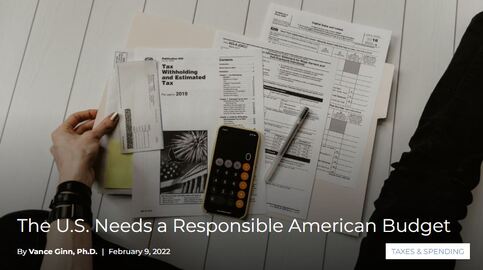 Even though Sen. Joe Manchin says the Build Back Better Act is “dead,” we all know that spending plans in the D.C. swamp have a disturbing tendency to rise from the grave. There’s already speculation (on CNN and elsewhere) about what a new big-government spending bill will contain. But with the national debt recently surpassing $30 trillion, we can’t allow even more irresponsible spending. The time for a Responsible American Budget is now. Another big-government bill making its way down the pike is The America COMPETES Act of 2022, which the House passed last week. It contains up to $350 billion more in deficit spending, all in the name of making us more competitive with China. This includes billions and billions of dollars in corporate giveaways, such as sending $50 billion in taxpayer money to the semiconductor industry, another $50 billion to the Energy Department as a slush fund for “science purposes” and $8 billion to the U.N. Green Climate Fund. That fiscal cost plus the bill’s regulatory cost will make the nation substantially less competitive. The truth is, what Americans and Texans need is relief, not more debt and higher prices. The last two years have been increasingly difficult on our wallets. With inflation hitting a 40-year high, prices of everyday consumer goods continue to increase compared to years past, thereby reducing our purchasing power. As the nation continues to recover economically, now is not the time to continue discussing increasing the burden of federal government spending and taxing on Americans. Should it pursue fiscal excesses like those included in the Build Back Better Act, each American would be saddled with an additional $24,000 of national debt, raising the total debt owed by each taxpayer to $111,000. Over the past couple of years, we’ve seen major Texas metropolitan markets like in Dallas, Austin, and Houston become the new home to many companies in industries like technology and manufacturing. As quickly as Texas begins to see these new job opportunities, there is the potential for them to vanish should Congress raise taxes. While the Tax Cuts and Jobs Act helped to increase the competitive advantage for businesses through cutting the corporate tax rate from 35% to 21%, there is movement to raise this rate and raise the global intangible low-taxed income (GILTI) rate on businesses. This would follow a disruptive trend of imposing a global minimum tax rate of 15% that was agreed to by more than 130 countries in October 2021, which would hit Texans hard. Much like our business community, Texans could find themselves struggling to get by as they see things like their inflation-adjusted wages decline, making it difficult to afford things like childcare or increasing challenges in saving for retirement. There should be a united voice in opposing additional hikes in spending and taxes and help refocus Congress toward supporting a stronger economy and more opportunities with fiscal restraint and deregulation that have been proven to work for all. A good start is making the Trump tax cuts permanent. Of course, America doesn’t have a revenue problem, but a spending problem. So, the primary way to provide Texans and all Americans with relief is by passing a Responsible American Budget. This budget would freeze government spending per person so that there is less of a burden on taxpayers. This budget approach has received high praise from members of Congress, top economists, state policymakers, and experts from across the country. Here are three of the many takes: Art Laffer: “Government spending is taxation, and we cannot spend and tax our way into prosperity. The Responsible American Budget is a terrific way to rein in this government waste by imposing fiscal limitations on the profligate spenders in Washington.” Steve Moore: “Spending in D.C. is simply out of control, and we have to act now to stop it. Fiscal restraints like the Responsible American Budget will go a long way to preserving our freedom and unleashing prosperity.” Grover Norquist: “There has been success in reducing federal tax rates in recent years, which President Biden and congressional Democrats are now trying to undo. Where we’ve yet to make sufficient progress is reining in federal spending. With the Responsible American Budget, the Texas Public Policy Foundation has laid out plan to get federal spending under control.” If we can have less spending, taxing, and regulating, we can compete and return to the real prosperity earned in 2019 rather than the increased dependency on government today. Otherwise, America can’t compete. https://www.texaspolicy.com/the-u-s-needs-a-responsible-american-budget/ Irresponsible government spending damages the productive private sector through redistribution of resources, higher taxes, higher price inflation, and higher interest rates, reducing Americans’ real incomes, job opportunities, and prosperity. While there have been multiple attempts to reduce the excessive growth of federal spending in the U.S., these attempts have had limited success, if any, as noted by the $28 trillion—and quickly rising—national debt and its $350 billion—and skyrocketing—interest payments. There is debate about whether deficits matter, and these days many from across the political spectrum suggest that they do not; they are partially correct. The part of fiscal policy that matters to our daily lives is government spending, which is the fundamental source of higher taxes, more regulations, higher debt, and more crowding out of the productive private sector. Given these challenges, the time is now to address excessive government spending, and we need to promote sound fiscal rules that make the budget tangible for Americans to understand and to hold elected officials accountable for excessive spending. A bold way to do this is provided by the Responsible American Budget. Originally published at TPPF. The Responsible American Budget has received high praise from members of Congress, top economists, state policymakers, and experts from across the country:
|
Vance Ginn, Ph.D.
|


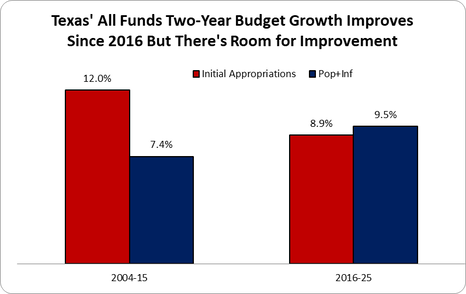


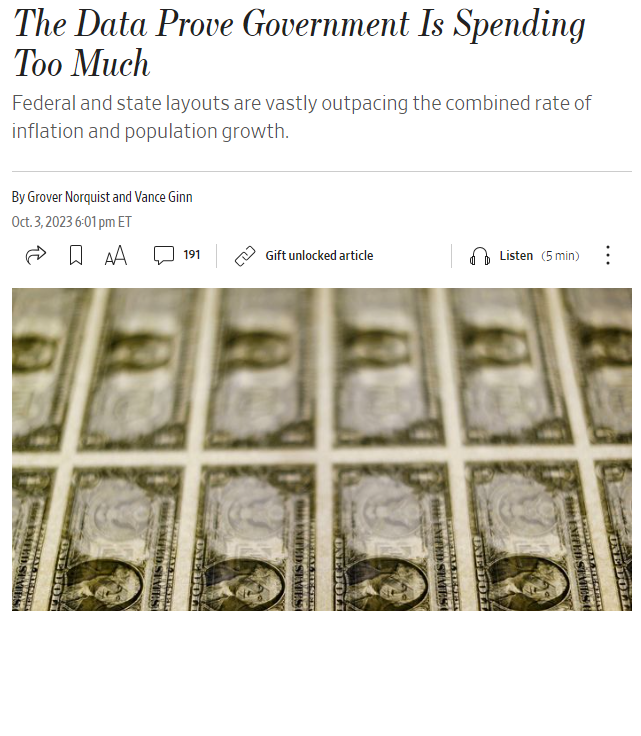
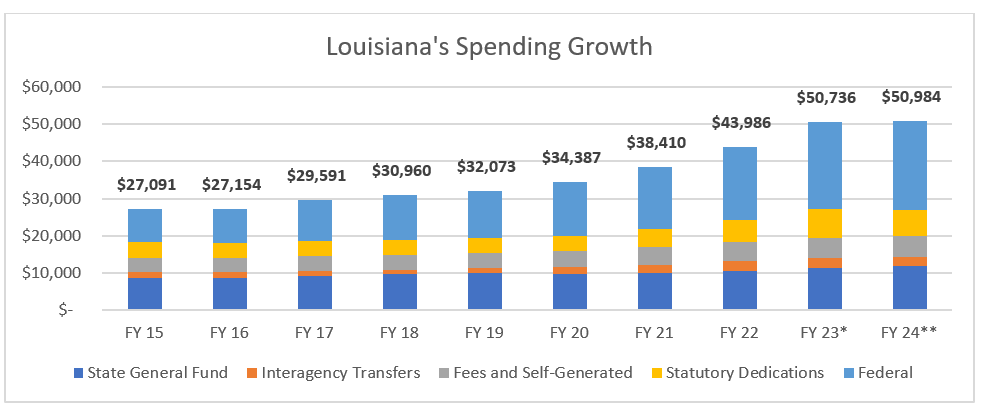
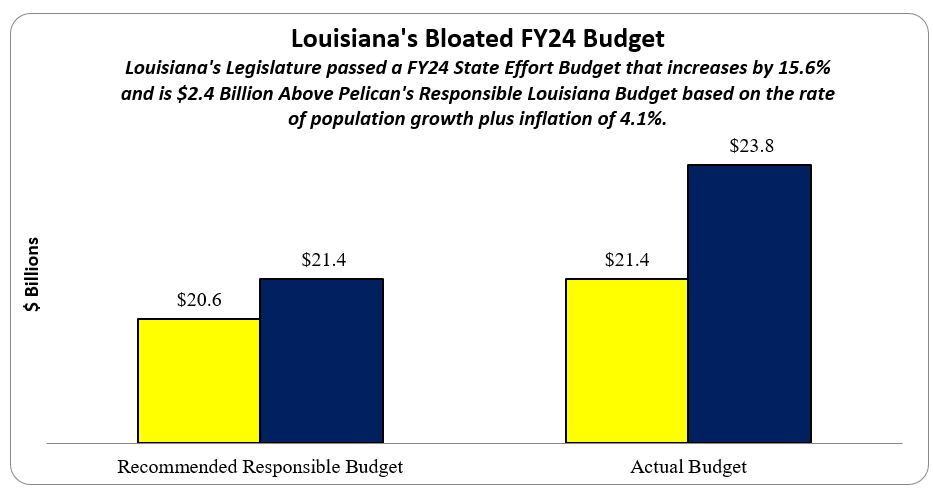
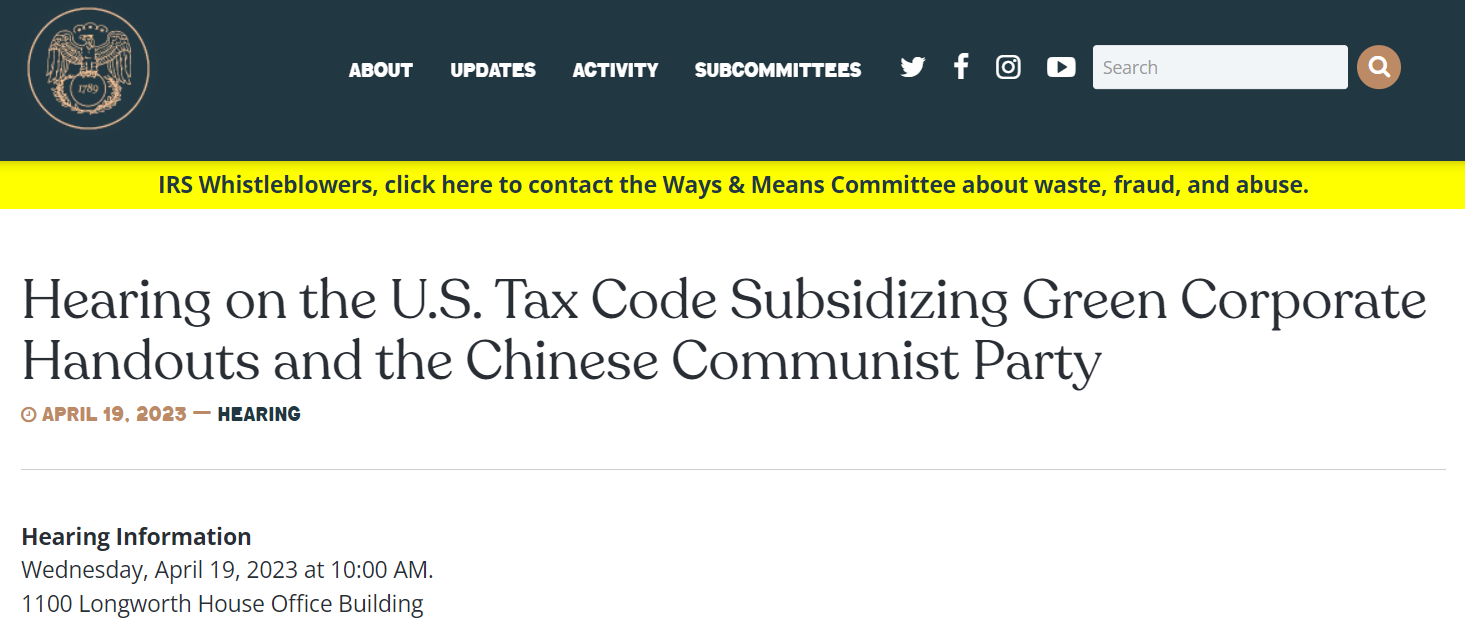

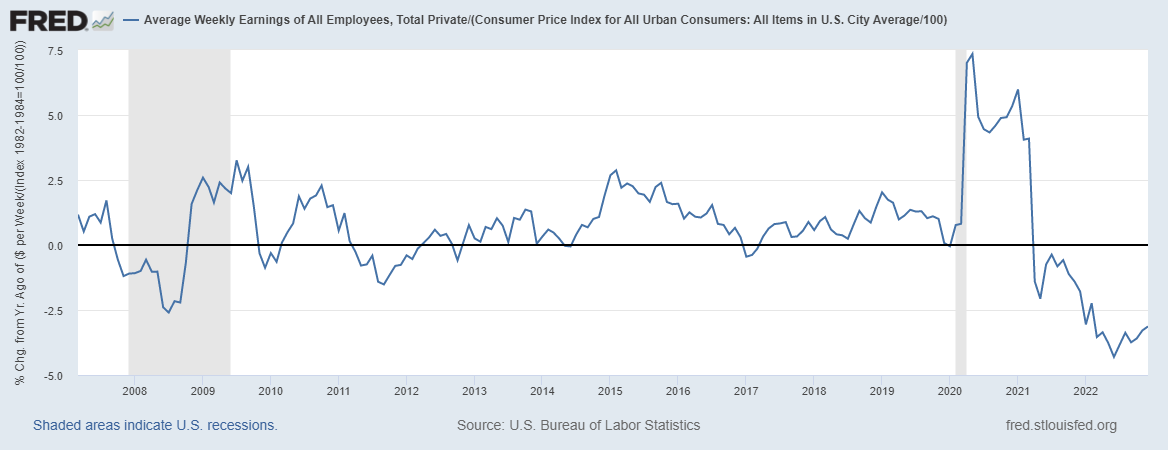
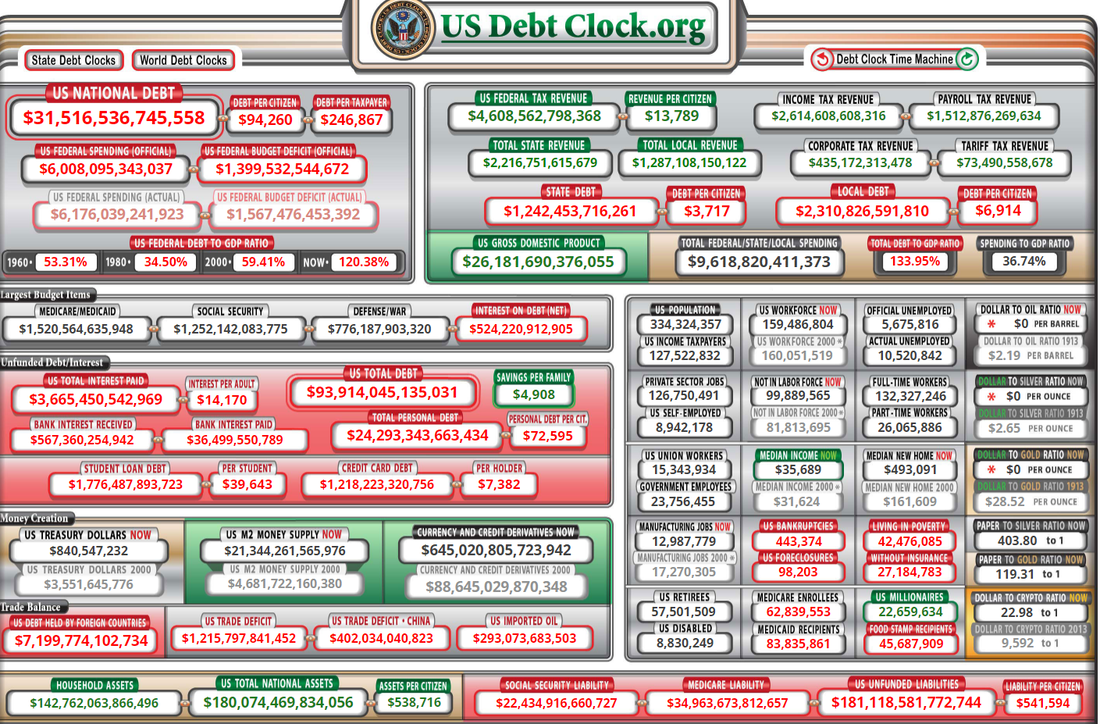
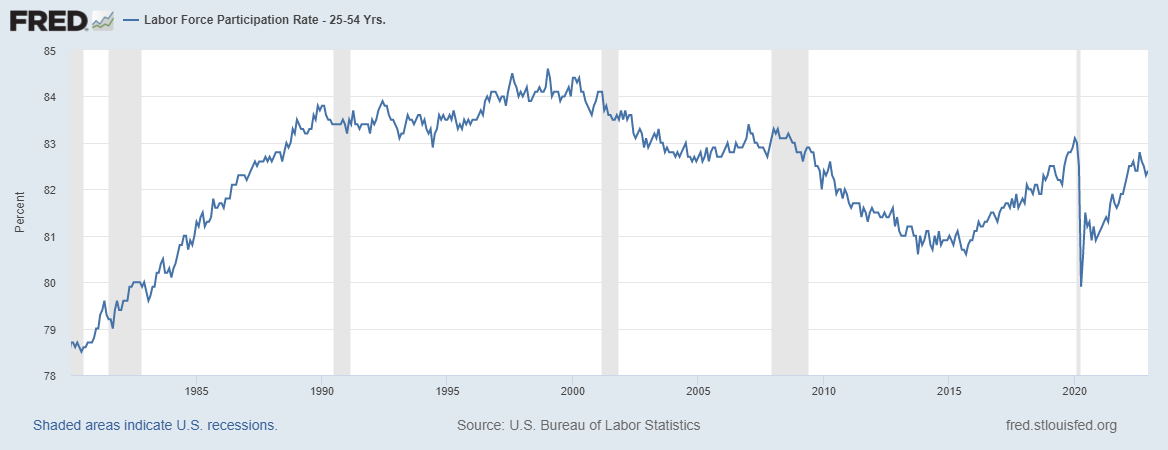


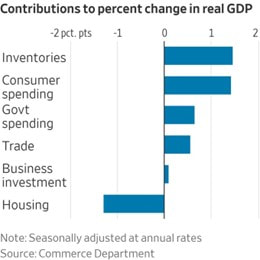
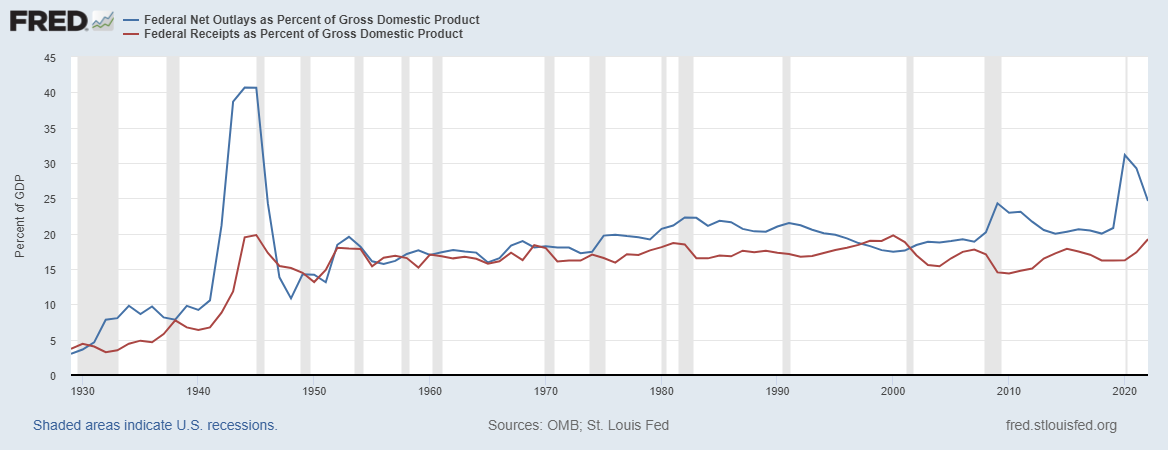
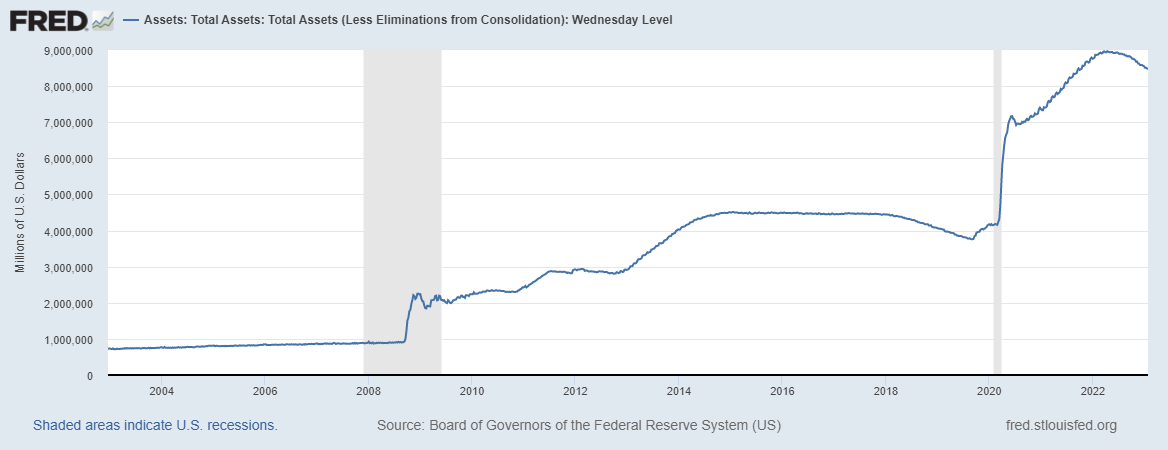
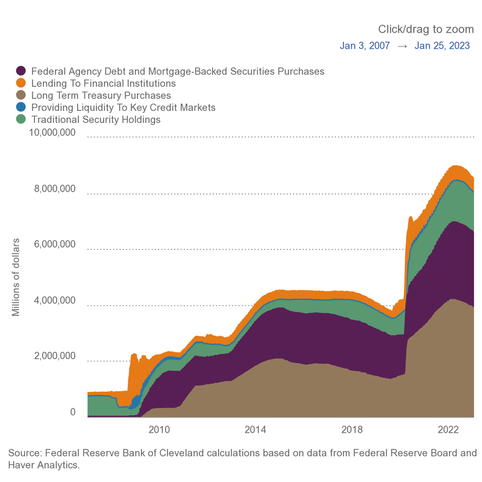
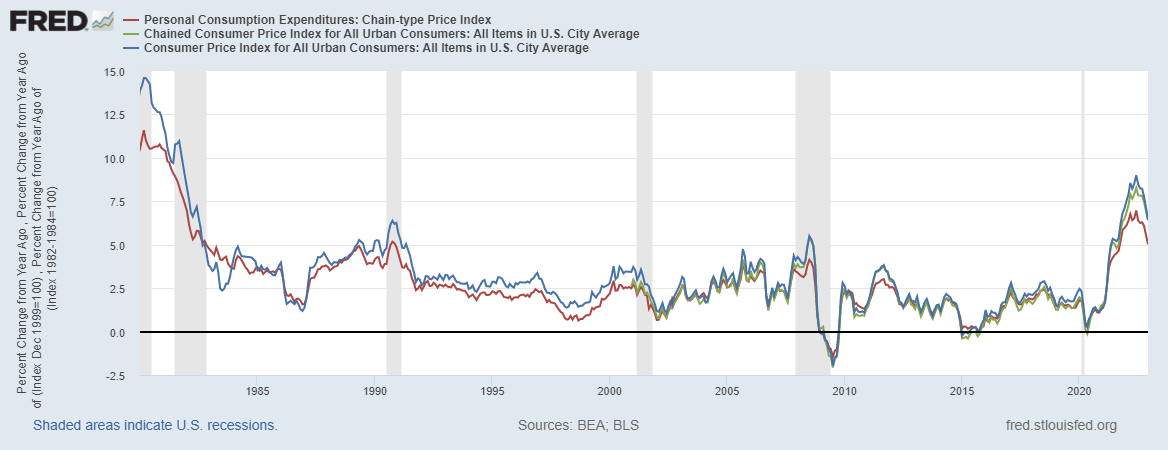
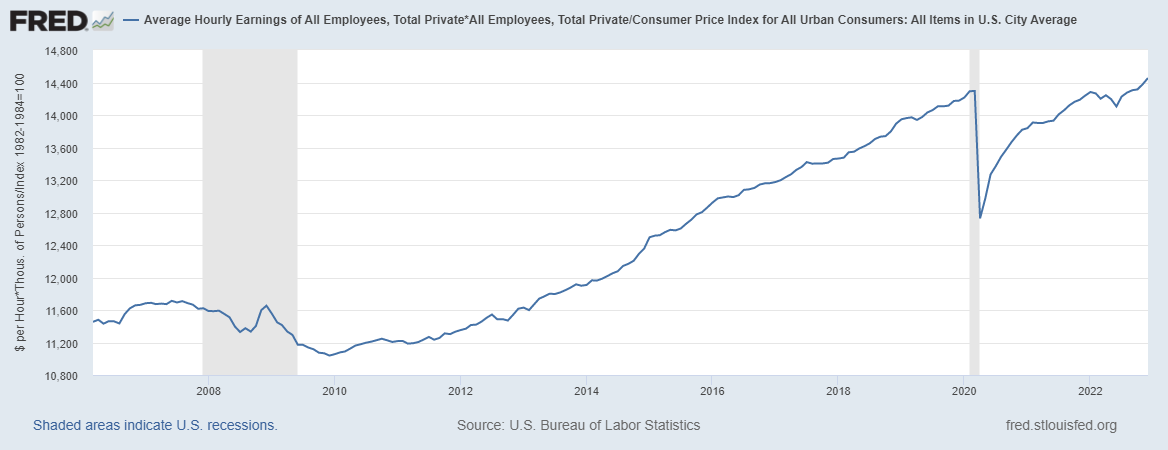
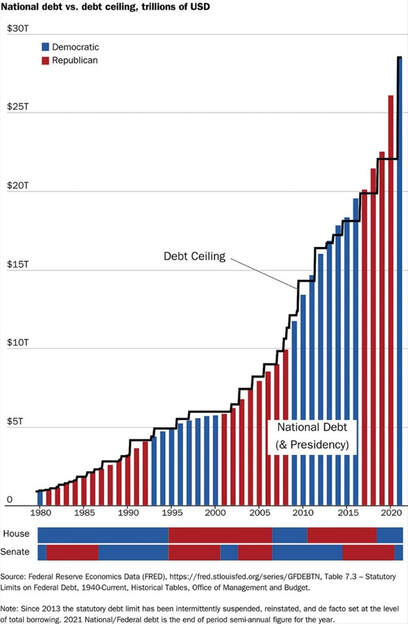
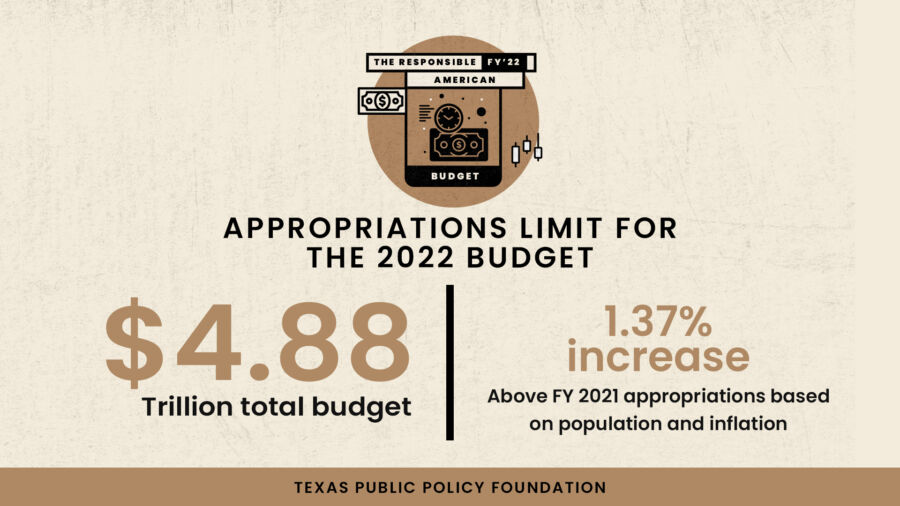

 RSS Feed
RSS Feed